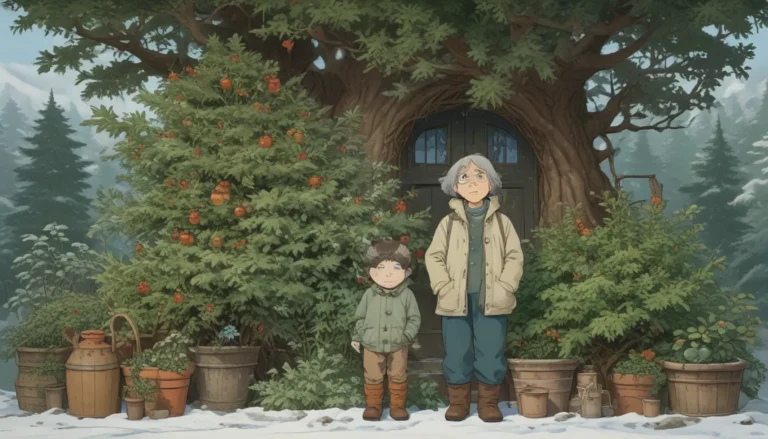A Comprehensive Guide to Growing and Caring for Strawflowers

Strawflowers, also known as Xerochrysum bracteatum, are a delightful addition to any garden. These annual plants belong to the Gnaphalieae group within the Asteraceae family and are related to various other popular blooms like asters, daisies, and sunflowers. You might also hear them referred to as paper daisies, golden everlasting, everlasting flowers, or everlasting daisies.
If you’re looking to add some cheerful blooms to your garden from summer to frost, and enjoy long-lasting flowers for both fresh and dried floral arrangements, growing strawflowers might be the perfect choice for you. In this detailed guide, we will explore everything you need to know to successfully cultivate and care for these beautiful annuals.
What You’ll Learn
- Cultivation and History: Discover the origins and characteristics of strawflowers.
- Optimal Growing Conditions: Learn the best practices for growing healthy strawflowers.
- Propagation: Explore different methods for propagating these lovely blooms.
- Tips for Success: Find helpful tips to ensure your strawflowers thrive.
- Care and Maintenance: Understand how to properly care for your strawflowers.
- Growing Tips: Get expert advice on growing successful strawflowers.
- Best-Loved Cultivars: Explore some popular varieties of strawflowers.
- Pest and Disease Control: Learn how to protect your strawflowers from common issues.
- Role in the Garden Scheme: Discover how strawflowers can enhance your garden.
- Companion Planting: Find out which plants go well with strawflowers.
- Best Uses: Cutting and Drying: Get creative tips on using your strawflowers in arrangements.
- Strawflower Quick Reference Growing Guide: A handy reference sheet for all your strawflower needs.
Cultivation and History
Strawflowers typically range from two to three feet in height, with some varieties growing even taller. These plants feature petal-like bracts that resemble dried, dead tissue, while the true flowers are tiny florets that make up a dense central disc. Originally from the grasslands of Australia, strawflowers made their way to Europe in the 1800s, where they were prized for their anti-inflammatory properties when brewed into tea.
Today, cultivars of Xerochrysum bracteatum come in a range of colors, including orange, pink, purple, white, and yellow. They thrive best in full sun, slightly acidic, nutrient-rich soil that drains well. With minimal fertilizer requirements, these annuals are a great addition to any garden.
Optimal Growing Conditions
For optimal growth, ensure your strawflowers are planted in a sunny spot with nutrient-rich, well-drained soil. Consider adding organic compost to boost essential nutrients. If you choose to fertilize, use a well-balanced, slow-release fertilizer sparingly to prevent nutrient imbalances. Remember to water during periods of heat and drought, but avoid overwatering to prevent root rot.
Strawflower Plant Propagation
To grow strawflowers in your garden, you can start with either seeds or cuttings. If starting from seeds, consider germinating them indoors before transplanting them outdoors after the last frost date. Alternatively, you can directly sow seeds into the ground or plant nursery-grown seedlings. Remember to provide adequate water, sunlight, and spacing to ensure healthy growth.
Tips for Success
- Water your strawflowers during periods of heat and drought.
- Avoid overwatering and keep weeds to a minimum.
- Prune or deadhead to encourage new growth and extended blooming.
- Stake tall stems as needed to support their growth.
Best-Loved Strawflower Cultivars
Explore popular varieties of strawflowers, such as ‘Bright Rose’, ‘Golden Yellow’, ‘Magenta Red’, and ‘Swiss Giant’, each offering unique colors and characteristics. Whether you prefer solid hues or mixed colors, there’s a strawflower cultivar to suit your taste and garden style.
Pest and Disease Control
While strawflowers are generally resistant to pests and diseases, it’s essential to maintain proper airflow and watering practices to prevent issues like powdery mildew or root rot. Regular monitoring and prompt action can help protect your plants from common garden problems.
Role in the Garden Scheme
Strawflowers are versatile annuals that can be used in various garden settings. Plant them in mass plantings, cut them for fresh arrangements, or dry them for everlasting displays. These blooms attract beneficial pollinators like butterflies and bees, adding life and color to your garden.
Companion Plants
Pair strawflowers with complementary plants like black-eyed Susan, balloon flower, bee balm, yarrow, and zinnia for a coordinated garden scheme. These plants share similar care needs and are suitable for xeriscaping, requiring minimal resources for maintenance.
Best Uses: Cutting and Drying
Whether you’re cutting strawflowers for fresh arrangements or drying them for everlasting displays, these blooms offer versatility and beauty. Harvest sturdy stems with partially open blossoms for fresh arrangements, and hang cut stems upside-down in a dry location for dried displays.
Conclusion
In conclusion, growing and caring for strawflowers is a rewarding experience that can enhance your garden spaces with vibrant colors and long-lasting blooms. By following the tips and guidelines outlined in this comprehensive guide, you can cultivate healthy and beautiful strawflowers that will thrive from summer to frost. Whether you’re a seasoned gardener or a beginner, these lovely annuals are sure to bring joy and beauty to your outdoor spaces.
For more gardening inspiration and plant-related articles, be sure to explore our website for a wealth of valuable resources. Happy gardening!
Keywords: strawflowers, Xerochrysum bracteatum, annual plants, gardening, cultivation, companion planting, pest control, flower arranging, propagation, garden care, flowering plants, plant varieties, growing tips
By incorporating additional sections, examples, and tips, this rewritten article offers a comprehensive guide to growing and caring for strawflowers. From optimal growing conditions to companion planting suggestions, readers can explore a range of information in an educational and engaging format.





